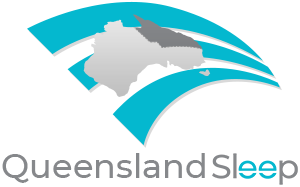
Dr Geoff Eather
Respiratory and Sleep Physician
Telephone: 07 3846 7955 | Facsimile: 07 3217 2523 | Website: www.qsdu.com.au
Well recognised risk factors for motor vehicle accidents include driving under the influence of alcohol and other drugs and excessive speed. It has been estimated however that 15 to 20% of all crashes are related to sleepiness. Many factors, including sleep deprivation, shift work, sedative drugs or medication, contribute to this, but underlying sleep disorders are an important treatable cause that should be considered.
Motor vehicle accidents can occur due to dozing behind the wheel, but risk is also associated with reduced vigilance and impaired concentration, akin to the effects of excessive alcohol.
In patients complaining of tiredness and somnolence it is important to assess driving risk, and to take a thorough medical history, including an assessment of medical disorders, medications, sleep habit and sleep duration. Sleep restriction is a common and important factor. For example, sleep duration of <5 hours has been shown to significantly increase crash risk, similar to the effects of a blood alcohol level above the legal limit.
It is also important to identify risk factors for sleep apnoea. Drivers with known obstructive sleep apnoea have been demonstrated to have up to 15 times higher likelihood of having a motor vehicle accident, with the highest risk being in those with the most severe and symptomatic disease. Patients with untreated sleep apnoea are at a cumulative increased risk if other factors such as sleep deprivation, shift work or other conditions are also present.
The difficulty is identifying those with sleep apnoea who are at most risk, as the reality is that the majority of people with sleep apnoea do not have accidents.
Those at highest driving risk are those that have: severe obstructive sleep apnoea; a history of crash or near-miss episode attributable to drowsiness or inattention and; severe sleepiness (as defined by a score on the Epworth Sleepiness Scale of ≥15).
Those who fit into this high risk category should be advised to restrict their driving as appropriate until adequate assessment and management can be obtained. Ideally a sleep physician should be involved, particularly in those who are commercial licence holders where it is mandated.
The good news is that treatment of sleep apnoea with CPAP can significantly reduce the crash risk and enable people with sleep apnoea to drive safely provided they are on effective therapy. The trick is to identify those most at risk and to promptly diagnose and treat sleep apnoea, while being mindful of managing other contributing factors.
Summary:
Drowsiness-associated motor vehicle accidents are related to many factors, including sleep deprivation, poor sleep habit, medical conditions, sedating medications and sleep disorders. Obstructive sleep apnoea is a common condition associated with increased risk if untreated and this diagnosis should always be considered. Assessment and treatment of sleep apnoea is essential to help reduce avoidable, life-threatening accidents caused by drowsy driving.

Elevated risk of sleepiness-related motor vehicle accidents in patients with OSAS: a case-control study.
Basoglu OK, Tasbakan MS.
Department of Chest Diseases, Ege University School of Medicine, Izmir, Turkey.
Traffic Inj Prev. 2014;15(5):470-6.
OBJECTIVES: The present case-control study aimed to determine whether obstructive sleep apnea syndrome (OSAS) patients are at an increased risk for sleepiness-related motor vehicle accidents (MVAs) than controls and to identify disease-related factors associated with accident risk.
METHODS: Demographic, anthropometric, clinical, and polysomnographic parameters of 312 OSAS patients were compared with 156 age- and sex-matched primary snoring subjects.
RESULTS: The rate of OSAS patients reporting accident was higher than snoring subjects (21.2% vs. 11.5%, P = .011), and OSAS was associated with an increase in accident risk (odds ratio = 2.06, 95% confidence interval [CI], 1.17 to 3.61, P =.012). Younger OSAS patients (P = .001) and those who were male (P = .001), had greater neck circumference (P = .002), had a higher Epworth sleepiness score(ESS; P < .0001), and had a higher apnea-hypopnea index (AHI; p = .039) had more MVAs than OSAS patients. Daytime sleepiness was associated with a 2.74-foldincrease (95% CI, 1.54 to 4.87, P = .001) in accident risk. In multiple logistic regression analysis, accident risk was associated with neck circumference (P <.031) and ESS (P < .0001). In addition, accident risk could be excluded in OSAS patients with neck circumference < 43 cm and ESS < 11 (sensitivity 33.3%,specificity 85.8%).
CONCLUSIONS: The present results show that OSAS patients have a twofold higher risk of traffic accidents than control subjects, and increased neck circumference and excessive daytime sleepiness are useful in predicting OSAS patients at higher risk of having accidents.
Excessive daytime sleepiness increases the risk of motor vehicle crash in obstructive sleep apnea.
Ward KL, Hillman DR, James A, Bremner AP, Simpson L, Cooper MN, Palmer LJ,Fedson AC, Mukherjee S.
University of WA, Western Australian Sleep Disorders ResearchInstitute, Queen Elizabeth II Medical Centre, Australia.
J Clin Sleep Med. 2013 Oct 15;9(10):1013-21.
STUDY OBJECTIVES:
- To describe the incidence rate of motor vehicle crashes (MVCs) in patients with obstructive sleep apnea (OSA); and
- To investigate MVC risk factors in OSA patients.
METHODS: A retrospective case-series observational study was conducted using data from the West Australian Sleep Health Study at a tertiary hospital-based sleep clinic. Participants were patients (N = 2,673) referred for assessment of suspected sleep disordered breathing. Questionnaire data were collected including age, sex, years of driving, near-misses and MVCs, sleepiness, and consumption of alcohol and caffeinated drinks. Overnight laboratory-based polysomnography was performed using standard methodology.(1) Poisson univariate and negative binomialmultivariable regression models were used to investigate associations between risk factors and MVC and near-miss risk in patients with untreated OSA.
RESULTS: In patients with untreated OSA, the crash rate was 0.06 MVC/person-year compared with the general community crash rate of 0.02 MVC/person-year. The rate ratio comparing very sleepy men with normal men was 4.68 (95% CI 3.07, 7.14) for near-misses and 1.27 (95% CI 1.00, 1.61) for crashes, after adjusting for confounders. In women there was a significant association with sleepiness score (p = 0.02) but no dose effect across quartiles.
CONCLUSIONS: Untreated OSA is associated with an increased risk of near-misses in men and women and an increased risk of MVCs in very sleepy men. There is a strong association between excessive daytime sleepiness and increased report of near-misses. Our data support the observation that it is those patients with increased sleepiness regardless of OSA severity who are most at risk.

Impact of sleep deprivation and OSAS on daytime vigilance and driving performance: a lab perspective.
Pizza F; Contardi S; Mondini S; Cirignotta F
IRCCS Istituto delle Scienze Neurologiche, Universita di Bologna, Italy. fpizza@gmail.com
Giornale italiano di medicina del lavoro ed ergonomia (Italy) Jul-Sep 2012, 34 (3 Suppl) p375-7
INTRODUCTION: To study the impact of sleepiness, a well-established cause of car accidents, on driving ability, we designed a 30-min monotonous simulated driving task. MATERIALS AND
METHODS: Our simulated driving task encompasses both primary vehicle control (standard deviation of lane position, crash occurrence) and secondary tasks (type and reaction times to divided attention tasks). Driving simulator data were correlated to subjective (state/trait) and objective (MSLT/MWT) sleepiness measures in healthy subjects undergoing sleep deprivation (SD) and in obstructive sleep apnea (OSAS) patients.
RESULTS: SD induced severe sleepiness during night time, when state sleepiness increased while primary vehicle control ability worsened. After SD, driving ability decreased and was inversely correlated to subjective and objective sleepiness at MSLT. OSAS patients driving ability was well correlated to objective sleepiness, with inverse correlation to sleep propensity at the MSLT and even more strict relation with the ability to maintain wakefulness at the MWT.
CONCLUSIONS: Sleepiness worsens driving ability in healthy subjects after SD and in OSAS patients. Driving ability correlates with subjective and objective sleepiness measures, in particular to the ability to maintain wakefulness.
Employer-mandated sleep apnea screening and diagnosis in commercial drivers.
Berger Mark; Varvarigou Vasileia; Rielly Albert; Czeisler Charles A; Malhotra Atul; Kales Stefanos N
Precision Pulmonary Diagnostics, Houston, TX, USA.
Journal of occupational and environmental medicine Aug 2012, 54 (8) p1017-25
INTRODUCTION: Obstructive sleep apnea (OSA) is common among commercial drivers and associated with health/safety risks, leading several trucking firms to mandate OSA screening.
METHODS: A total of 19,371 commercial drivers were screened for OSA with an online questionnaire (Somni-Sage reg) through employer mandates. Questionnaire and polysomnography results were analyzed retrospectively.
RESULTS: Screening categorized 5908 drivers (30%) as higher risk. To date, employers have sent 2103 higher-risk drivers for polysomnography, demonstrating that 68% of high-risk drivers tested had an apnea-hypopnea index (AHI) greater than 10 and 80% had an AHI of 5 or more. A conservative prevalence estimate for OSA (AHI > 10) was 21% among the drivers studied.
CONCLUSIONS: Online screening followed by polysomnography for high-risk drivers demonstrates as many as 21% of commercial drivers may have OSA. Mandatory screening can have a high yield among commercial drivers.

One night’s CPAP withdrawal in otherwise compliant OSA patients: marked driving impairment but good awareness of increased sleepiness.
Filtness Ashleigh J; Reyner Louise A; Horne James A
Sleep Research Centre, Loughborough University, Leicestershire, UK. ashleigh.filtness@monash.edu
Sleep & breathing = Schlaf & Atmung (Germany) Sep 2012, 16 (3) p865-71
PURPOSE: Obstructive sleep apnoea (OSA) patients effectively treated by and compliant with continuous positive air pressure (CPAP) occasionally miss a night’s treatment. The purpose of this study was to use a real car interactive driving simulator to assess the effects of such an occurrence on the next day’s driving, including the extent to which these drivers are aware of increased sleepiness.
METHODS: Eleven long-term compliant CPAP-treated 50-75-year-old male OSA participants completed a 2-h afternoon, simulated, realistic monotonous drive in an instrumented car, twice, following one
night: (1) normal sleep with CPAP and (2) nil CPAP. Drifting out of road lane (‘incidents’), subjective sleepiness every 200 s and continuous electroencephalogram (EEG) activities indicative of sleepiness and compensatory effort were monitored.
RESULTS: Withdrawal of CPAP markedly increased sleep disturbance and led to significantly more incidents, a shorter ‘safe’ driving duration, increased alpha and theta EEG power and greater subjective sleepiness. However, increased EEG beta activity indicated that more compensatory effort was being applied. Importantly, under both conditions, there was a highly significant correlation between subjective and EEG measures of sleepiness, to the extent that participants were well aware of the effects of nil CPAP.
CONCLUSIONS: Patients should be aware that compliance with treatment every night is crucial for safe driving.




